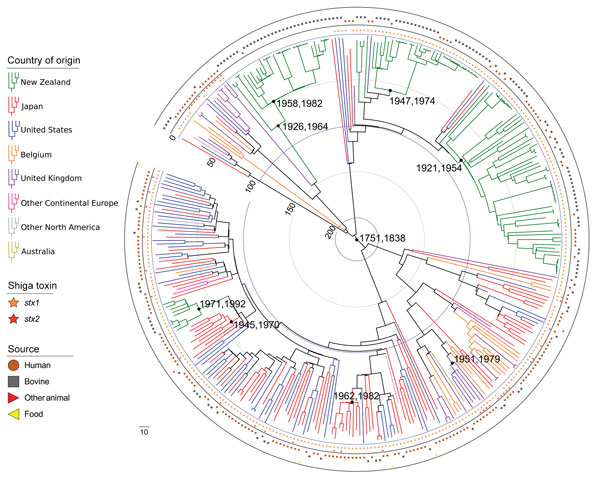Volume 25, Number 3—March 2019
Research
Use of Genomics to Investigate Historical Importation of Shiga Toxin–Producing Escherichia coli Serogroup O26 and Nontoxigenic Variants into New Zealand
Figure 4

Figure 4. Maximum clade credibility tree of time of most recent common ancestor analysis of 344 Escherichia coli serogroup O26 sequence type 21 isolates in investigation of historical importation of Shiga toxin–producing E. coli serogroup O26 and nontoxigenic variants into New Zealand. Key convergence dates are annotated with 95% highest posterior density intervals, and the concentric circles indicate earlier time periods (blue, 100 years; gray, 50 years) from the age of the newest isolate (2017.5 in decimal years).
1Current affiliation: Centers for Disease Control and Prevention, Christiansted, Virgin Islands, USA.
Page created: February 19, 2019
Page updated: February 19, 2019
Page reviewed: February 19, 2019
The conclusions, findings, and opinions expressed by authors contributing to this journal do not necessarily reflect the official position of the U.S. Department of Health and Human Services, the Public Health Service, the Centers for Disease Control and Prevention, or the authors' affiliated institutions. Use of trade names is for identification only and does not imply endorsement by any of the groups named above.